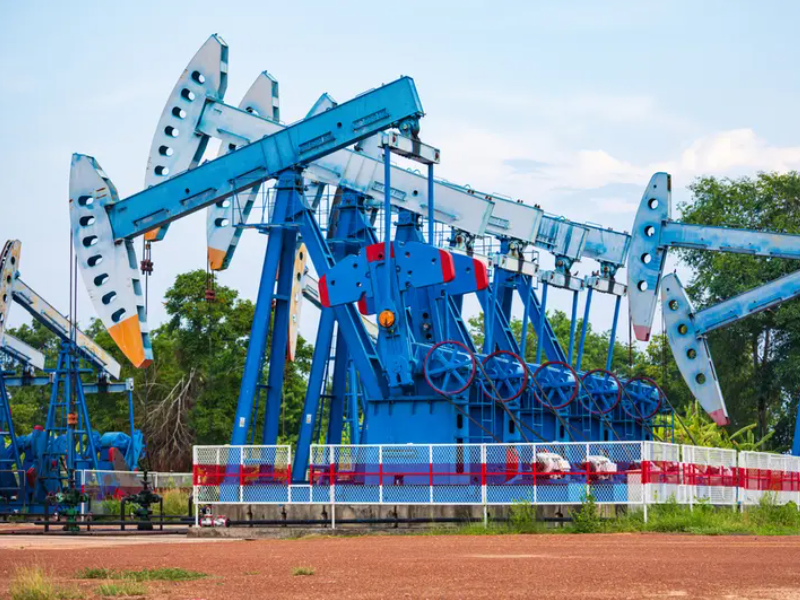After exploration, drilling, and completion, the well begins normal production, and the oil field enters the production phase. Based on the needs of the oil field, the goal is to maximize the extraction of underground crude oil to the surface, increase well production and oil recovery, and rationally develop the reservoir to achieve high and stable production. This is called oil recovery.
1. Crude Oil Production Path:
Oil Formation - Near-Wellbore Area - Perforation Trajectory - Wellbore Interior - Artificial Lift Device - Oil Pipeline - Wellhead - Christmas Tree - Surface Pipeline - Metering Station - Oil-Gas Separator - Oil Pipeline Network
2. Common Oil Recovery Methods:
1) Flowing Recovery:
Flowing recovery utilizes the elastic energy of the oil formation to release crude oil to the surface. Flowing recovery primarily relies on the expansion of gases dissolved in the oil as pressure decreases. Within the entire production system, the oil flows naturally, relying on the pressure energy provided by the formation to overcome gravity and flow resistance. No artificial energy is required, making flow recovery the simplest, most convenient, and most economical oil recovery method.
2) Artificial Lift:
Artificial lift is a method of artificially adding energy to the bottom of an oil well to lift oil from the reservoir to the wellhead. As the total amount of oil produced increases, reservoir pressure decreases. In oil fields developed through water injection, the percentage of water produced by the well gradually increases, increasing the specific gravity of the fluid. Both of these situations gradually weaken the well's flowing capacity. To increase production, artificial lift (also known as mechanical oil recovery) is used. This is the primary method of oilfield production, especially in the later stages of field development. Two methods are pumping and gas lift. Pumping units are commonly used in onshore oilfields, while electric submersible pumps are commonly used offshore. Progressive cavity pumps are often used for wells producing sand or heavy oil. Other common methods include jet pumps, gas lift, and plunger pumps.
3. Oil and Gas Well Stimulation Techniques:
Oil and gas well stimulation techniques are technical measures to increase the production capacity of oil wells (including gas wells) and the water absorption capacity of water injection wells. Commonly used methods include hydraulic fracturing and acidizing, as well as downhole explosions and solvent treatment.
1) Hydraulic Fracturing:
Hydraulic fracturing involves injecting a high-viscosity fracturing fluid into a well at a rate exceeding the formation's absorption capacity, increasing bottomhole pressure and fracturing the formation. As the fracturing fluid is continuously injected, the fractures extend deeper into the formation. The fracturing fluid must contain a certain amount of proppant (primarily sand) to prevent the fractures from closing when the pump is stopped. Proppant-filled fractures alter the flow pattern of oil and gas in the formation, increasing the permeability area and reducing flow resistance, thereby exponentially increasing oil well production. The recent surge in popularity in the global oil industry, shale gas, is a result of the rapid development of hydraulic fracturing technology!
2) Oil Well Acidizing:
Oil well acidizing is generally classified into two categories: hydrochloric acid treatment of carbonate formations and soil acid treatment of sandstone formations. Hydrochloric acid treatment of carbonate formations involves the reaction of carbonate rocks, such as limestone and dolomite, with hydrochloric acid to produce water-soluble calcium chloride or magnesium chloride, which increases the permeability of the formation and effectively improves the production capacity of the well. Under formation temperature conditions, hydrochloric acid reacts rapidly with rock, and most of it is consumed near the bottom of the wellbore, preventing it from penetrating deep into the oil layer, thus affecting the acidizing effect.

Sandstone formation soil acid treatment: The main mineral components of sandstone are quartz and feldspar. The cementing materials are mostly silicates (such as clay) and carbonates, both of which are soluble in hydrofluoric acid. However, the reaction between hydrofluoric acid and carbonates can produce calcium fluoride precipitation, which is detrimental to oil and gas well production. Sandstone is generally treated with a mixture of 8-12% hydrochloric acid and 2-4% hydrofluoric acid to avoid calcium fluoride precipitation.
The concentration of hydrofluoric acid in the soil acid should not be too high to avoid damaging the sandstone structure and causing sand production accidents. To prevent adverse reactions between calcium and magnesium ions in the formation and hydrofluoric acid, as well as other potential problems, the formation should be pretreated with hydrochloric acid before soil acid injection. The pretreatment range should be larger than the soil acid treatment range. In recent years, a self-generated soil acid technology has been developed. Methyl formate reacts with ammonium fluoride in the formation to generate hydrofluoric acid, which acts inside the deep well high-temperature oil layer to improve the soil acid treatment effect, thereby increasing the production capacity of the oil well.

